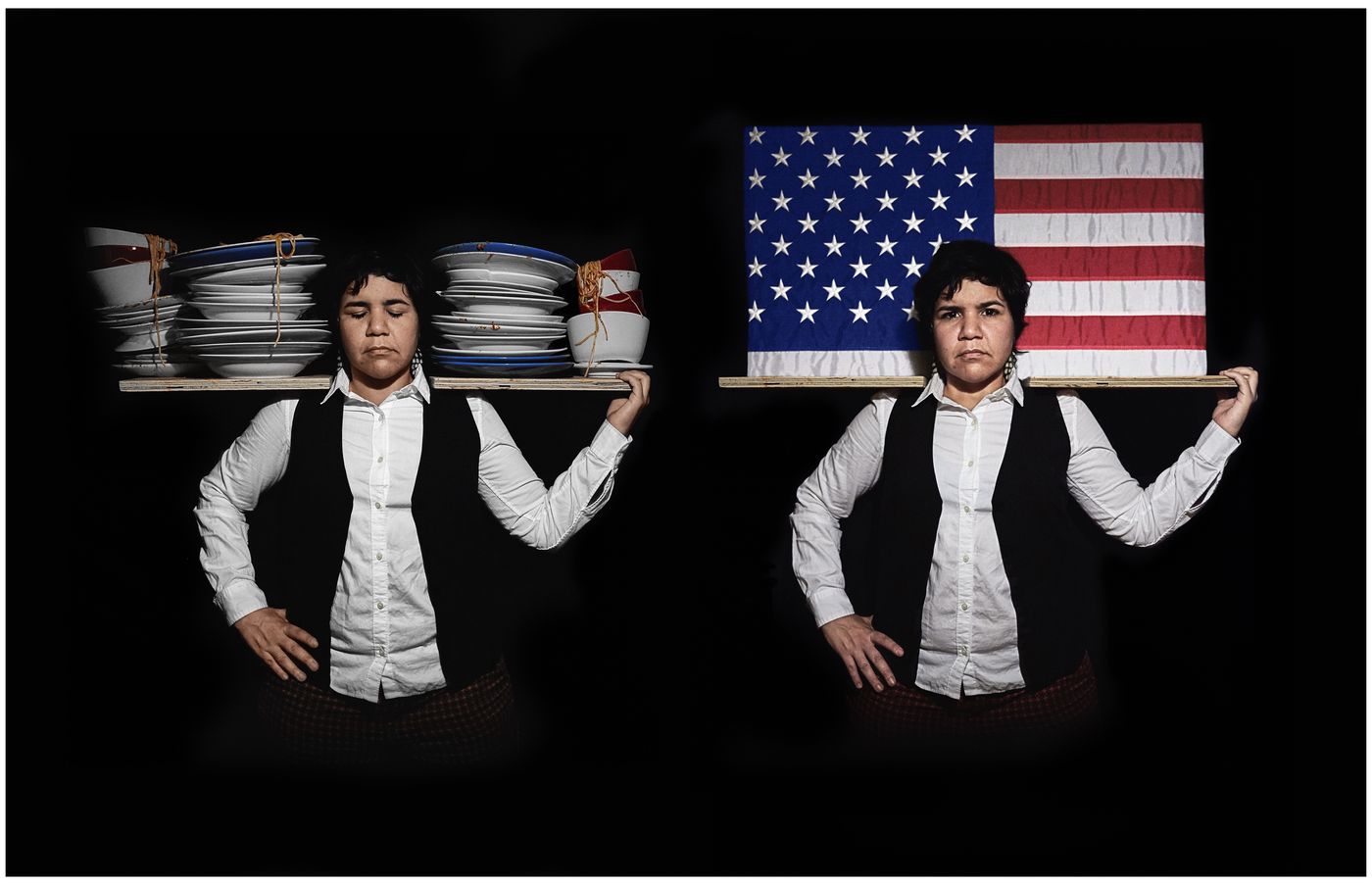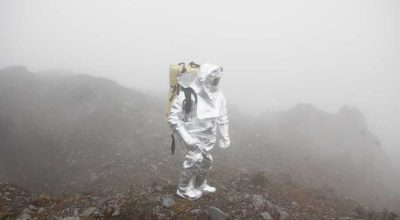
DAY JOBS
One of the typical measures of success for artists is the ability to quit their day jobs and focus full time on making art. Yet these roles are not always an impediment to an artist’s career. The exhibition Day Jobs, currently on view at the Blanton Museum of Art, illuminates how day jobs can spur creative growth by providing artists with unexpected new materials and methods, working knowledge of a specific industry that becomes an area of artistic interest or critique, or a predictable structure that opens space for unpredictable ideas.
As artist and lawyer Ragen Moss states: “Typologies of thought are more interrelated than bulky categories like ‘lawyer’ or ‘artist’ allow… Creativity is not displaced by other manners of thinking; but rather, creativity runs alongside, with, into, and sometimes from other manners of thinking.”
Day Jobs, the first major exhibition to examine the overlooked impact of day jobs on the visual arts, is dedicated to demystifying artistic production and upending the stubborn myth of the artist sequestered in their studio, waiting for inspiration to strike.
The exhibition makes clear that much of what has determined the course of modern and contemporary art history are unexpected moments spurred by pragmatic choices rather than dramatic epiphanies. Conceived as a corrective to the field of art history, the exhibition also encourages us to acknowledge the precarious and generative ways that economic and creative pursuits more openly are intertwined.
Day Jobs features work produced in the United States after World War II by artists who have been employed in a host of part- and full-time roles: dishwasher, furniture maker, graphic designer, hairstylist, ICU nurse, lawyer, and nanny–and in several cases, as employees of large companies such as Ford Motors, H-E-B Grocery, and IKEA.
The exhibition includes approximately 75 works in a broad range of media by emerging and established artists such as Emma Amos, Genesis Belanger, Larry Bell, Mark Bradford, Lenka Clayton, Jeffrey Gibson, Jay Lynn Gomez, Tishan Hsu, VLM (Virginia Lee Montgomery), Ragen Moss, Howardena Pindell, Chuck Ramirez, Robert Ryman, and Fred Wilson, among many others.

“Bringing together a diverse group of artists that are connected by something as universal as work, Day Jobs sheds light on how their creative endeavors have been inspired and shaped by tasks, roles, and observations at jobs often held to earn a living and seemingly unrelated to their artistic practices. This timely exhibition invites us to rethink how we view creativity and success, and to reflect on our own relationships with work and the unexpected, everyday places we find inspiration,” said Blanton director Simone Wicha.
Curated by Veronica Roberts, former curator of modern and contemporary art at the Blanton, with Lynne Maphies, former curatorial assistant, Day Jobs is organized in seven sections, based on job sectors: “Art World,” “Service Industry,» “Media and Advertising,” “Fashion and Design,” “Caregivers,” and “Finance, Technology, and Law.”
“The idea for Day Jobs came from the culmination of artists’ stories, so many of whom graciously shared with me how deeply influential their day jobs were,” said exhibition curator Roberts, now the Director at the Cantor Arts Center at Stanford University.
“Artists are some of the hardest-working people I know, but I am struck by how misunderstood they often are and conceived this show to dispel the misguided myths of the starving artist or the romanticized artist struck by a dramatic epiphany. At the core of the exhibition is a desire to acknowledge the precarious and generative ways that art and economic pursuits are intertwined. By including works by both well-known and lesser-known artists, I hope that visitors see artists they know and love in new light, and, at the same time, are introduced to artists they’ve never seen before.”
Conversations with artists fueled Roberts’ inspiration for the exhibition and illuminated the often overlooked—in institutional settings and art historical scholarship alike—relationship between artistic labor and economic labor. Roberts’ first conversation to this effect was with Sol LeWitt, who reflected on his time as a receptionist at the Museum of Modern Art as one of the most instructive experiences of his life. This is where the exhibition begins, with the historical nucleus of artists that worked at MoMA in the 1950s and 1960s.

Art World
The first section of the exhibition includes MoMA employees and artists of LeWitt’s generation Dan Flavin (elevator operator), Robert Ryman (security guard), and Robert Mangold (security guard andlibrary employee).
This group of artists was deeply impacted by the exchange of ideas, both personally and artistically. For example, Flavin’s pyramidal construction of white fluorescent tubes, Monument for V. Tatlin (1974), was inspired by a book he was reading about the Russian Avant-Garde, which LeWittgave him when they crossed paths on the job. Paired with a selection of untitled white paintings by Ryman, a LeWitt wall drawing, and a two-panel Mangold painting, these works reveal the reductive visual vocabulary they forged.
Notably, during their period of employment at MoMA, the artists all began to explore the use of pared-down materials and conceptual art strategies in the creation of serialized work. This section introduces a central conceit of Day Jobs—art does not emerge from a vacuum but is a rich interplay of ideas and experiences.
The section continues with artists who likewise worked in the art world. However, for this latter group of artists, access to museum collections, archives, and art-related materials such as frames and crates, was particularly impactful.
Included is work by a former frame shop technician (Larry Bell), a member of MoMA’s curatorial staff (Howardena Pindell), a freelance art handler (Manuel Rodríguez-Delgado), a member of the Getty Museum’s education department (Sandy Rodriguez), and a freelance museum educator (Fred Wilson).
Some of the connections between employment and artistic practice are ideological or conceptual. For example, Wilson’s extended time in museums influenced his engagement with institutional critique. Others are more materially based: Pindell’s full-time job as a curatorial assistant, and later associate curator, meant that she lost access to daily natural light and had to abandon the figurative painting practice she developed in Yale’s MFA program.
She turned her attention to materials and processes that could be experimented with after hours. Taking home discarded file folders, paper, and mat board scraps—the very hallmarks of a museum desk job—Pindell attached the pieces created by a hole puncher to unstretched canvas that she sewed together in pieces. The result, Autobiography: Japan (Mountain Reflection) 1982–3, transforms these quotidian office materials into a striking, large-scaleabstraction.

Service Industry
The exhibition’s third section is the broadest, in terms of the range of jobs, but also their influence on artistic practice. This section features the work of Allan McCollum (meal preparer for TWA flights, art handler, baker, office cleaner, museum guard), Gregory Blackstock (dishwasher), Violette Blue (server), Tom Kiefer (janitor, U.S. Customs and Border Protection), Frank Stella (house and boat painter), Julia Scher (cleaning and security system services for women), Ricardo Valverde (water meter reader), and Mathew Angelo Harrison (product developer, Ford Motor Company).
Kiefer worked part-time as a janitor at U.S. Customs and Border Protection in Arizona and his resulting photographs of neatly arranged personal belongings confiscated from detained migrants—wallets, water bottles, and rubber duckies—shed light on the dehumanizing immigrant experience.
Similarly, Violette Blue addresses her own experience as a Venezuelan immigrant in the U.S. and the often-unseen individuals who work multiple jobs to make ends meet. In her American Dream, a colleague at the bakery where she worked holds large stack of plates on her shoulders and, in a diptych, the American flag.

Media and Advertising
While some artists pose a critique of the industries in which they are employed via their artwork, others discover new materials and strategies through their day jobs that bleed into their artistic practices. The latter is true for many artists working in the fields of Media and Advertising, such as Barbara Kruger (lead designer, Condé Nast), Gretchen Bender (commercial film editor and director), Marsha Cottrell (production designer, Condé Nast), Chuck Ramirez (graphic designer, H-E-B Grocery), Andy Warhol (commercial illustrator), and James Rosenquist (billboard painter).
Ramirez infuses the visual language of everyday items with unexpected poignancy. Whatacup (2002/2014) riffs on the recognizable cups from Texas’s beloved Whataburger chain, blowing up the design in a life-size six-foot photograph that focuses on the element of the packaging that makes a humble request of its consumers: “When I’m empty, please dispose of me properly.” Here, the commercial product has become a poignant self-portrait and reference to the artist’s own HIV-positive status.


Fashion and Design
More artists who discovered new materials through their day jobs are those hailing from the worlds of Fashion and Design, such as Emma Amos (assistant to textile artist Dorothy Liebes), Richard Artschwager (furniture maker), Genesis Belanger (prop stylist assistant), Mark Bradford (hair stylist),and Jeffrey Gibson (visual merchandiser, IKEA). Many of the artists in this section also gained a heightened awareness about how to maximize the dramatic presentation of objects.
The endpapers Bradford used as a hairstylist serve as the foundation for many of his early large-scale paintings, such as Same Ol’ Pimp (2002). Belanger’s day job helped her articulate her voice and identify the kind of work that she’d like to make. Regularly scouring New York City for eclectic items to accentuate photo shoots for magazine and fashion labels, she encountered a diverse array of unconventional materials and learned to make any kind of prop that might be needed. Working as an assistant to a prop stylist offered Belanger, as she expressed, “a backstage pass to how the most powerful images in our culture are made.”

Caregivers
The economics of care is typically under-acknowledged, but Day Jobs seeks to rectify this with a section that highlights the crucial work done by mothers (Lenka Clayton), nannies (Vivian Maier, Jay Lynn Gomez), and nurses (Nate Lewis).
A series of five collages made by Gomez during her time as a nanny for a family in West Hollywood, California, articulates the ethnic and class distinctions that are endemic to such a relationship, wherein immigrant laborers—and Mexican Americans like Gomez—routinely serve as the engines that make wealthy white America run smoothly. In portraying her caregivers, she makes visible the “invisible.” As Gomez shared, “It was inspired by saying, ‘I’m here. We exist.’”

Finance, Technology, and Law
The exhibition’s final section features work by Sara Bennett (public defender, The Legal Aid Society), Ragen Moss (transactional lawyer), Jim Campbell (hardware design engineer), Jeff Koons (commoditiesbroker), VLM (Virginia L. Montgomery) (graphic facilitator), and Tishan Hsu (word processor at a law firm).
During her nearly two decades as a public defender, Bennett began photographing women with life sentences both inside and outside of prison. In works such as JUDY, 69, in the nursery at Bedford Hills Correctional Facility (2019) and TAYLOR, 36, in the fire and safety office at Bedford Hills Correctional
Facility (2018), she asks us to consider women in prison beyond their crimes. Bennett took up photographybecause she felt that pictures and testimony from incarcerated women could change public attitudes around criminal justice.
While Bennett contemplates the harsh realities of the present day, Hsu’s work has its basis in a contemplation of the future. As a word processor in the 1970s and ‘80s, he considered society’s relationship with screens, and their daily effect on lives and bodies. For nearly ten years, Hsu worked as a word processor at night while making paintings during the day. The resulting works feature rounded corners that presciently echo the shape and cadence of the technologies that would soon be omnipresent.
Day Jobs presents an alternate art history, one that upends familiar narratives and myths around artists.Its ideas challenge typical notions about what success looks like, how ideas are formed, and who should be allowed to make art.
The exhibition will remain on view through July 23, 2023, at the Blanton Museum of Art, The University of Texas at Austin, 200 E. Martin Luther King Jr. Blvd., Austin, TX, USA
También te puede interesar
DE LA PÁGINA A LA CALLE: CONCEPTUALISMO LATINOAMERICANO EN LA COLECCIÓN DEL BLANTON
La exposición "De la página a la calle: Conceptualismo Latinoamericano en la Colección del Blanton", que se presenta hasta el 26 de agosto en el Blanton Museum of Art (Austin, Texas), ilustra las diversas...
INVISIBILIA. PRIMERA RETROSPECTIVA DE ÓSCAR MUÑOZ EN EEUU
"Invisibilia" es la primera retrospectiva de mitad de carrera de la obra del artista colombiano Óscar Muñoz (Popayán, 1951) en Estados Unidos. Aunque ha tenido retrospectivas a gran escala en Europa y América Latina,...
COLECCIÓN CISNEROS DONA MÁS DE 200 OBRAS DE ARTE LATINOAMERICANO A SEIS MUSEOS
La Colección Patricia Phelps de Cisneros (CPPC) donará más de 200 obras de su colección de arte contemporáneo latinoamericano a seis importantes museos de América Latina, Estados Unidos y Europa: MoMA, Nueva York; Museo...



